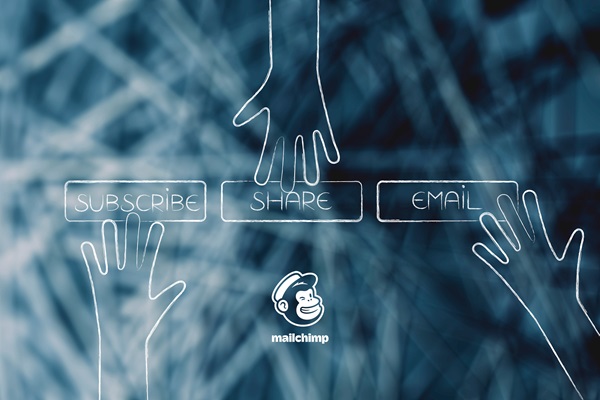Mailchimp is an email marketing service that helps users to create, organize, send and track their email campaigns.
Email marketing services help ensure that emails are not blocked or automatically sent to SPAM folders. In addition, they offer analytics that help users track aspects of their email campaigns, including the number of emails opened.
If you have 2,000 or fewer contacts and send 12,000 or fewer emails per month, Mailchimp’s free plan is a great option. Unless you get caught in one of the many upsells, this plan is what it claims — actually free.
In addition, with the exception of certain customer service options, this plan offers almost all of the great features of the paid plans — just with a limit on the number of contacts and emails. At under $20 a month each, the Essentials and Standard plans are affordable for most churches. Only the premium plan — at almost $300 a month — gets pricey. If you opt for one of the paid plans, Mailchimp offers discounts for nonprofits and for establishing certain security features.
Beginning the process
Mailchimp’s system is intuitive and user-friendly. In addition, there are lots of Mailchimp tutorials and articles to help if you get stuck.
Start by setting up an account, creating a password and choosing which type of account you wish to activate (Free, Essential, Standard or Premium). As you move through your set up, you’ll be given the option several times to add elements to your plan. These are upsells. Simply click the “not now” options on these. You can always add features later, if needed.
As part of your set up, you may have the opportunity to import a current email list. Don’t worry if you don’t have one or aren’t ready to take that step. You’ll have the opportunity to import contacts from several sources later, or you can create a new list by manually inputting the names and email addresses of your subscribers.
Once your account has been set up, make sure to check your profile on the dashboard. Add any relevant information.
Building your lists
Mailchimp lets users maintain different lists of subscribers. For instance, you can create a list for donors, another for guests, one for staff and another for members. Then, when you send your emails, you can designate which list(s) to use to target a specific audience. Segmenting your audience in this way always results in better-performing email campaigns.
Once you have created your list(s), you will want to add subscribers to that list. You can do this by choosing import options from social media lists, current email lists, Excel or .csv files or by manually entering names and email addresses. Once you have your lists and subscribers for each list, you are ready to send your first communication.
Crafting the message
When you're ready to develop your email, log into your Mailchimp account and click on the “Create Campaign” button.
While Mailchimp does offer a few different other digital services (ads, landing page, website), we're going to concentrate on emails in this article. So, click on the top selection — “Email.” You will be prompted to type a name for your campaign. This title is for your eyes only. If you are doing a series of emails on love, you could type “Loving Your Neighbor.” If you plan on launching a fundraising campaign, you could type “New Worship Center Fundraising.”
The next screen will require you to choose who your email is being sent to and from.
One of the great features of Mailchimp is that once you've selected your list of recipients, you may also personalize the “To” field. By clicking this box, you can choose to have the “To” line read with the recipient’s first name, last name, first and last name or a customized choice. This means that instead of reading To: [email protected], your email could read To: Jane or To: Jane Doe. This both helps emails not get sent to spam folders plus it is makes them more likely to catch the reader’s eye and attract an open.
The “From” section will be set up to populate automatically based on your account information.
The third step is to fill in the subject line and the preview text for your email. This information is what will catch your reader’s eye. You want to get people to open your email. So, spend time crafting memorable subject lines. A headline analyzer that grades prospective titles may help. Remember, your emails aren’t worth much if no one reads them.
Finally, it’s time to design your email. Mailchimp offers a variety of templates. While you can start from scratch, using a template makes the process much quicker and easier. You can choose a layout or theme template. Look at Mailchimp’s selection. Pick one, add your logos, pictures and memorable content in the correct spots.
Once you have completed your email, send a test email to yourself or someone else to proof how it looks. When you are 100% satisfied with it, you simply hit send or schedule the email to be sent at a later time or date.
Collecting your data
Another great feature of Mailchimp is the ability to access data on each of your email campaigns.
In easy-to-read reports, Mailchimp outlines how many of your contacts received the email, if there were problems with any of the addresses, how many were actually opened and how many people clicked on any links that were in the email. You can even see which subscribers are opening your emails most often.
While there are more advanced analytic options for paid users, the free program offers a lot of very useful data. You can even compare how well your emails are performing (in terms of how often they are being opened) in comparison to industry averages. Use the email analytics to gain valuable insight, including who your readers are, when they are reading your emails and what seems to interest them most.
Email is more valuable and effective than ever.
Having a professsional-grade email program doesn’t have to be difficult or expensive. With Mailchimp, there's no need to know code or to understand complicated platforms. Mailchimp can make using email campaigns fun and affordable. In the end, however, if Mailchimp isn't what you decide for long-term use, there are a number of email service providers available to help promote your message.

Tricia K. Brown is a writer, editor, keynote speaker and Bible teacher. In addition to being a wife and mother of four sons, she is the sole proprietor of The Girls Get Together, where she and her team provide women's event programs for churches and other organizations.

